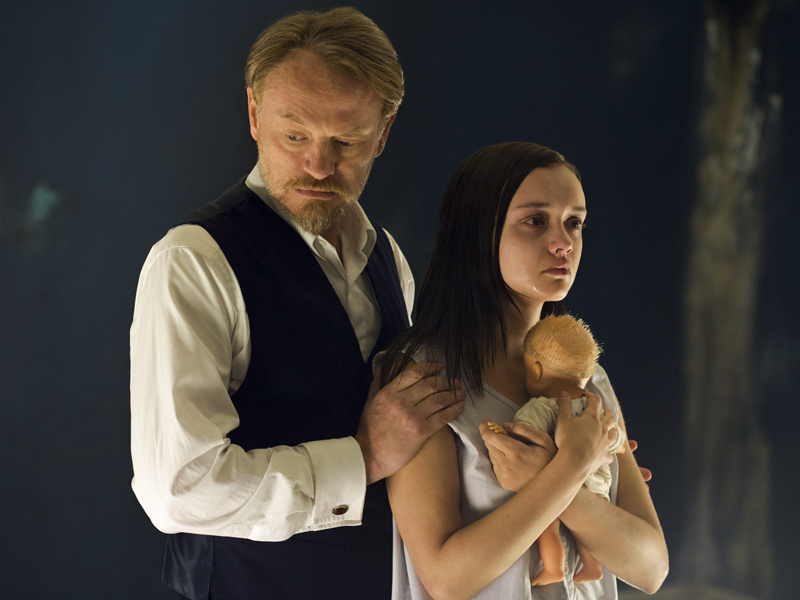
I couldn’t wait to see “The Quiet Ones” when I saw that it was coming from Hammer Film Productions. This year has been less than fulfilling for horror film fanatics, but knowing that you can look forward to a movie from the people responsible for “Let Me In” and “The Woman In Black” can only make you hopeful. Unfortunately, an hour into the movie, my initial squee of delight devolved into an indifferent “meh,” as the film forced me to suffer through multiple cases of the cliches, shocks and stupid person syndrome.
“The Quiet Ones” — like many others in its genre — revolves around a group of researchers attempting to flush out the causes of supernatural events and “cure” the people affected. This also means that in the theater I was crossing off my cliched character bingo sheet as they appeared. The story (based very loosely on a true story) begins in 1970s Oxford, with Brian McNeil (Sam Claflin) joining a professor’s group experiment to explain and cure the existence of possession phenomena. In joining, Brian finds himself the sensitive and sympathetic protagonist in a motley crew consisting of the dangerously obsessive Professor Coupland (Jared Harris), the pretty and sexually promiscuous Krissi (Erin Richards), the hardly-characterized-at-all-sacrificial-lamb-in-waiting Harry (Rory Fleck-Byrne) and the supernaturally tortured victim and possible cause of the spooky happenings Jane Harper (Olivia Cooke). Oh hey, I got bingo!
The story progresses as Brian is charged with filming the many experiments and interviews that Coupland performs, attempting to call out a secondary entity somehow related to Jane whom she calls Evey. This is where the film first goes wrong. Without hyperbole, at least a third of the film is seen through Brian’s camera lens, leaving the audience to transition from a perfectly competently shot scene, to another shaky cam-filled jump-scare montage that has been beaten harder than a dead horse. This change of perspective also adds a border to the outside of the screen, intending to recreate the video footage as it would have been filmed in the era. Unluckily, the only effect this serves is one of distraction, constantly pulling the audience out of the atmosphere of the scene.
Aside from the poor choices of cinematography, there seemed to be a fundamental misunderstanding on the part of director John Pogue as to what was good about the movie. One of the highlights of the film is its ability to generate a disturbing atmosphere, prodding the viewer with eerie noises, darkly lit sets and solid acting on the part of most of the cast. It’s regrettable, then, that Pogue felt the need to continuously slap the audience in the face with jump scares, which — in contrast with what their name would imply — aren’t scary; they’re startling. Despite this, they are littered everywhere in the film, even punctuating the scene transitions with loud noises and sudden motions that aren’t connected to anything in the narrative. It’s this misunderstanding of his own film that undermines Pogue’s brilliant scenes of suspense, including a moment where a character is completely at ease, leaning her head against an open window, just waiting to be attacked by something or someone. These moments of terror aren’t forced on the audience, but made in the audience’s own mind, letting their imaginations run wild with what could happen next.
On the part of character motivations, “The Quiet Ones” has the misfortune of falling victim to its own genre. Needing to progress the plot, all of the characters in the movie suffer from what is lovingly referred to in horror movies as “stupid person syndrome.” Due to its own need to have the story reach a climax, all of the characters are forced to stick around, citing what has to be a total loss of brain function for their desires to abandon all common sense and leave for good. While at one point several characters seem to recover and leave, it’s only temporary and they come back within 20 minutes.
Despite its numerous flaws, “The Quiet Ones” has an ending that some will find worth the trip. Suffering as it does from cliches and questionable choices in direction, it could serve those people just looking for a quick jump-scare fest to take a date to, but it would be better to just save your ticket money and watch “The Conjuring” or “The Exorcist.” Hammer Film Productions may have disappointed with this movie, but there’s always hope for the next.
Rating: 2 stars








